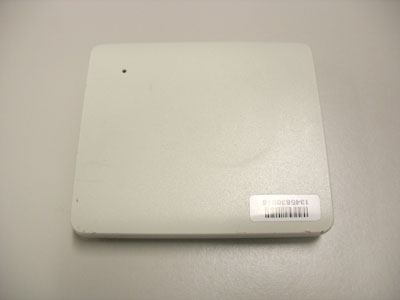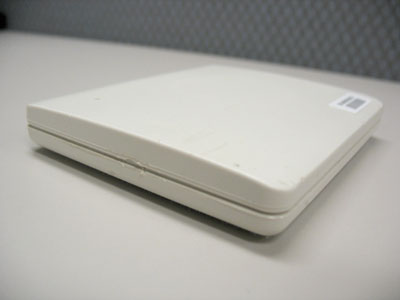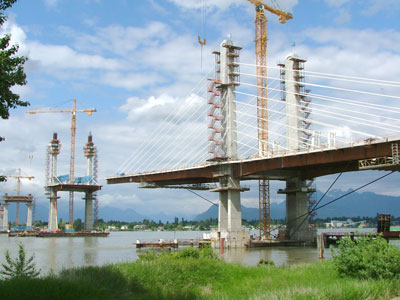Get ready for electronic tolling on the Golden Ears Bridge
Get ready for electronic tolling on the Golden Ears Bridge
We’re currently building the Golden Ears Bridge over the Fraser River, connecting Surrey and Langley to Maple Ridge and Pitt Meadows—hurrah!
Golden Ears also features the first electronic tolls in Western Canada, and we’re trying to get the word out about how the system works. I sat down with Mahrokh Arefi, tolling manager for the Golden Ears Bridge project, to talk about the subject. Feel free to add your own questions in the comments below – I’ll get Mahrokh to answer them at a later date.
Bridge tolls will be collected electronically. Can you talk about it a bit?
Of course! Instead of using toll booths, electronic sensors and digital cameras will identify vehicles and charge them accordingly for driving over the bridge. This electronic tolling technology is called QuickPass.
The sensors and cameras will track vehicle types and license plates, as well as detecting whether the vehicle has a QuickPass transponder on board. The QuickPass transponder—a special electronic device available from TransLink in early 2009—allows your vehicle to be easily identified by the sensors. Due to those efficiencies, drivers with transponders will pay the lowest toll to cross the bridge.
You don’t have to have a QuickPass transponder to use the bridge, though. The system will identify you no matter what, and you’ll simply pay slightly higher fees if you don’t have the transponder, as well as if you’re registered with TransLink for the toll system. Those registered with TransLink but with no transponder will pay a slightly higher toll than those with the transponders. Those without a transponder and who are not registered with TransLink will pay the highest tolls.
Here’s a video that helps show how the technology works:
Why is this better than manual tollbooths?
There are much lower capital costs. You don’t have to staff toll booths, or pay cash collection and processing fees. A lot of right-of-way is required to install toll plazas too – you need 10 to 12 lanes to put in a toll plaza. Electronic tolling is also much more efficient, processing 2,000 vehicles an hour per lane. Manual tolling can only do 400-500 vehicles in an hour per lane.
Electronic tolling is really the trend for any new tolling project nowadays. The technology has matured and it’s already being used in many places: the 407 in Toronto, SR91 in California. The M50 in Ireland just converted over from manual tolling to electronic tolling.
So just how much will drivers pay to use the bridge?
What you pay depends on what type of vehicle you drive, whether you’ve registered your billing and vehicle information with TransLink, and whether you have a QuickPass transponder or not.
Here’s a chart explaining the details:
| Vehicle Classification | Registered vehicle with transponder | Registered vehicle without transponder | Unregistered vehicle |
  most passenger vehicles, vans, sport utility vehicles, pick-up trucks, and taxis |
$2.85 | $3.45 | $4.00 |
  cars towing a trailer, light duty commercial vehicles with fewer than five axles, school buses, motor homes, cars towing trailers, and intercity buses or coaches |
$5.75 | $6.30 | $6.80 |
  articulated trucks or tractor trailer combinations |
$8.60 | $9.15 | $9.75 |
  motorized two-wheel vehicles; does not include electric bicycles |
$1.45 | $2.00 | $2.55 |
Bicycles, pedestrians, emergency vehicles, TransLink buses, transit support vehicles and project maintenance vehicles are exempt from the toll. As well, our tolling policies are also guided by a tolling bylaw passed by TransLink’s Board in 2005.
What does the transponder look like? How do you get one?


The transponder is a little plastic square, and it can be put on your dashboard or windshield.
In early 2009, you can give your billing and vehicle information to TransLink through the website or by phone, and you can then choose to lease a transponder for $1 per month, with a $10 refundable security deposit. The transponder will be mailed out to you afterwards.
You can also get a transponder in person from one of our two Customer Service Centres, which will be set up at north and south sides of the bridge.
So how do you enforce the toll fees if you don’t stop the vehicles?
If vehicles aren’t registered with our system, the digital cameras on the bridge will capture their license plate numbers, and we then ask ICBC for the vehicle information so we can send them a notice. As well, if a vehicle’s toll debts pile up, ICBC will refuse to issue a driver’s license, vehicle license and vehicle insurance to the driver until the tolls are paid.
What about drivers who aren’t from BC? They can’t be tracked through ICBC.
We don’t expect very many drivers from out of town to be using the bridge, as it’s chiefly a connector between Surrey, Langley, Maple Ridge, and Pitt Meadows. That being said, we are pursuing agreements with Alberta and Washington State to find a resolution to this situation.
Thanks Mahrokh!
——-
So if you’re looking for more information on the project, please feel free to visit TransLink’s Golden Ears Bridge website, or the Golden Ears Bridge construction website. More info on will become available on both sites and the Buzzer blog as we get closer to the opening of the bridge!







Two issues come to mind with regards to the electronic tolling and the rates. First off, will there be an option to PURCHASE the transponder outright, rather than rent it? Looking long term (and projecting that the same technology will be used for the tolled Twinned-Port Mann, and the eventual tolled replacement-Patullo bridges), two years of ‘rent’ plus the deposit would probably pay for the cost of the transponder unit(assuming it is comperable to those used by EZpass in the eastern seaboard USA). Secondly, for trucking/courier/taxi etc companies that are potentially going to be using the tolled bridge(s) frequently, will there be a “bulk-discount” rate, either applied per crossing, or on a monthly-discount-based-on-volume basis? Working for a home delivery company, there are occassions where, to do my route and service my customers, I end up crossing the Fraser 3-4 times in a day.
Not related to my above comments, looking forward, once we have the GEB constructed, the Port Mann twinned and the Patullo replaced, the only “free” crossings are going to be the Abbotsford-Mission bridge, and the Alex Fraser – nothing in between. This will present the problem of there “not being a reasonable alternative”. If there are three toll crossings in a row and some 60km distance between alternatives, the toll rates will have to be revisited, I would think.
Hi Hardy,
I brought your comments to the attention of Marokh and the Golden Ears team and here’s the response they sent me:
Thanks for your feedback on the QuickPass electronic tolling system, Hardy. We appreciate hearing your questions and concerns.
Regarding the purchase of QuickPass transponders, the standard practise among most electronic tolling systems is that transponders remain the property of the tolling authority, and are therefore leased (not sold) to customers. This also is the arrangement used in many other commercial circumstances (e.g. leasing your digital cable box) and generally has benefits for all concerned. For QuickPass customers, for example, it means that if your transponder battery were to die, TransLink would provide a new unit immediately and free-of-charge. As well, if transponder technology improves and evolves in the coming years, customers won’t be stuck with older-model units.
In response to your question about “bulk discounts”, the Golden Ears Bridge is being funded primarily by toll revenue, based on a “user pay” principle. An extension of that concept is that drivers pay for each crossing of the bridge, so those who put the most wear and tear on the bridge — and who also benefit most from the travel time saving it will provide — pay for that. Discounts for frequent customers (other than the lower toll rate for transponder users) would not necessarily be consistent with the principle of user pay, and are not being considered at this time.
Regarding your last comment about toll rates, the rates on the Golden Ears Bridge have been designed to pay for the bridge’s design, construction, operation, maintenance and rehabilitation in as short a time as possible. If, however, we find that our projections have not proven accurate, the TransLink Board could consider adjusting the rates in the future.
Thanks again for your thoughts.
I understand your goal to pay off the bridge in as little time as possible, and also your logic behind making those who use the bridge pay more often. However, it still needs to be practical for the average family. We are thinking of moving from Mission to Langley to be closer to work (Burnaby) and family (Surrey). Yet we still want to be close to our favourite sports club (Abbotsford) and the north shore, where we have friends/church/kayaking, etc…Either way, simply visiting the other side as little as four times a week would put us back a whopping $1,300/yr. You might find that people are going to avoid the bridge altogether, making it longer yet to be paid off. Why not just put the toll at a more reasonable rate of a loonie and let us enjoy the benefits such a beautiful structure has to offer?
P.S. I’d just like to mention that the Champlain Bridge’s toll in Montreal remained at a mere 25 cents from 1962 to 1990 until it was paid off. A loonie doesn’t seem too unreasonable by comparison. So it takes longer? I can’t imagine what a lower-middle class family with more than one family member working on the ‘other side’ on different shifts is going to do.
Hey don’t bus riders already pay $1.25 or more to cross a bridge or boundary today. Perhaps that’s what the tolls should be set at to match the amount people pay on transit.
Hi Valerie,
Sorry for the delay — I’ve asked our Golden Ears team for their response and here is what they have put together.
“Thanks for your query regarding the tolls on the Golden Ears Bridge. The toll rates for the bridge have been designed to reflect the expected
value of the bridge for the people who will use it, in terms of the money they will save on fuel, vehicle maintenance, etc., as well as the less tangible (yet perhaps more meaningful) benefit of substantial travel-time savings.
Like the pricing of any service, we’re aiming to find the value price point for users. You’re right that if TransLink were to set the tolls too
high, less revenue might be generated than if the tolls were lower. Similarly, if the tolls were set too low, the cost of the bridge may not be paid off as quickly. Based on detailed analyses and projections by an internationally-respected consulting firm, we think the tolls have been set at the optimal level. If, however, it’s learned from the marketplace that the toll rates need to be adjusted, the TransLink Board of Director can amend the tolling bylaw and establish different rates.
We’ll start to get very preliminary indications of our success in pricing the value of the Golden Ears Bridge later this year. The new span will open to traffic in the spring, and tolls will start to be levied following a 30-day toll-free period. It’s TransLink’s expectation that you’ll find that the time and money the bridge will save you, your family and others will
outweigh the cost of the tolls.”
What stops someone from stealing your transponder and using it themselves?
Are there smaller transponder units for motorcycles, if not why not?
Where on this expansive website can a motorist register? Perhaps a hotlink might be a bright idea?
How are you going to stop people from
obstructing their plate location?
When will the bridge be paid off and we can cross it without a toll?
Hey Cyril, I’ve asked the Golden Ears team for the answers to your questions, and here they are.
– If a Quickpass transponder is lost or stolen, the theft should be reported asap to the Quickpass Customer Service Centre. You will not be charged for any unauthorized use of the transponder after its loss has been reported.
– There are no special transponders for motorcycles. The Quickpass transponders are small and light.
– The site for Quickpass registration is http://www.quickpasstolling.ca .
– RE: the obstruction of plates. The BC Motor Vehicle Act, section 13(1) states that:
“A person commits an offence if the person drives, operates, parks or is in charge of a motor vehicle or trailer on a highway … without displaying on it, in the manner prescribed, the number plates issued or designated by the Insurance Corporation of British Columbia or otherwise prescribed to be displayed on that motor vehicle or trailer for the current licence year of that motor vehicle or trailer”;
– Section 74(1) of the BC Motor Vehicle Act states that:
“A person commits an offence if the person
(a) alters, obliterates or repaints a figure or letter … on a number plate issued under this Act, or
(b) drives, operates or has charge of a motor vehicle or trailer having displayed on it … a number plate, numbered decal or document referred to in paragraph (a) on which a figure or letter has been altered, obliterated or repainted”.
– Any decision about the removal of tolls on the Golden Ears Bridge will be the responsibility of the TransLink Board of Directors at some future date. TransLink is using the toll revenue to pay for the design, construction, financing, operation, maintenance and rehabilitation of the bridge and its 14 km associated road network.
Where do you expect the transponders to be mounted on motorcycles and can the signal from the transponders be picked up if they are in your jacket pocket. Are the transponders transferable from one family vehicle to another or can you register all the license plates to be covered by one transponder
Hi Mike,
With regard to whether transponders are transferable, check out this question from the FAQ on the Quickpass site. I’ll repeat it here:
I’ll ask someone about the motorcycle part though – it’s not covered in the FAQ.
Hi Mike,
Finally I have an answer! Basically, as of April 30, it was decided that motorcyclists won’t need to lease a transponder. (There were a lot of motorcycle inquiries and this appears to be the best solution.)
So, as long as you register your motorcycle with us, we offer the cheapest rate (i.e. the original transponder rate of $1.45) without the need of having to carry/installing any devices on their motorcycle. We are revising the rate table to reflect the following change: in the three columns to the right of “Motorcycles,” $1.45 will be replaced with N/A and $2.00 will be replaced with”$1.45.
Attention Richmond commuters… There are media reports that the Knight Bridge will be targetted for toll in the near future (click on my name link). I’m wondering why not the other many bridges around Vancouver. Does Translink not own any other bridge? Does this mean more funding for the Canada expansion since the tolls are targetting Richmondites?
;-)
Hmmm, I’m not certain that’s exactly “new” news or even a reality at this stage. By that I mean the 10-year plans we’ve had out since the start of August have suggested road pricing and bridge tolling as funding mechanisms… but that funding mechanism is very much at the idea stage. We really have to wait for the Mayors’ Council to approve the plans first before we do anything.
Also, TransLink only owns four bridges in Metro Vancouver: the Knight Street, the Pattullo, Westham Island, and Golden Ears.
[…] out the Quickpass website for registration info, and see this Oct 2008 blog post for more on how the bridge tolling technology […]
Having been a part of the Online Universal Work Marketing team for 4 months now, I’m thankful for my fellow team members who have patiently shown me the ropes along the way and made me feel welcome
LATEST TREND